Art & Exhibitions
Andrea Fraser Challenges Wealth Disparity in the Art World in Major Exhibition
30 years of boundary-pushing performance art.
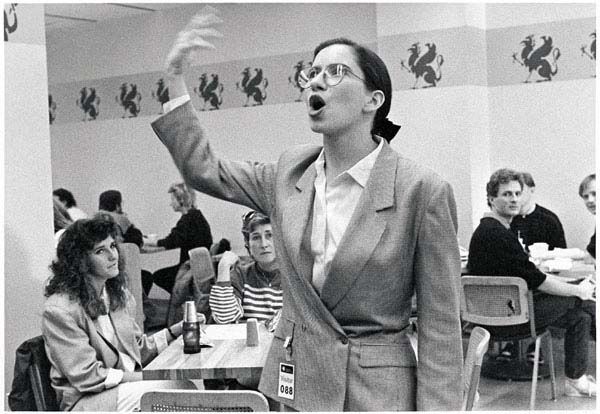
30 years of boundary-pushing performance art.

Amah-Rose Abrams

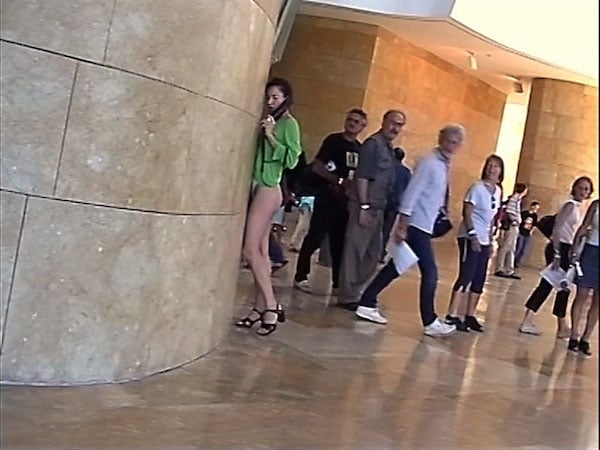
Andrea Fraser, Still from Little Frank and His Carp (2001)
Photo: Collecció MACBA. Fundació MACBA. Adquirida gràcies al Taller de la Fundació. © Andrea Fraser, 2016
Andrea Fraser’s first institutional solo exhibition in Spain opened at Museu d’Art Contemporani de Barcelona (MACBA) this past Friday. Titled “Andrea Fraser. L’1%, C’est Moi“ (I am the one percent), the exhibition brings together 30 years of boundary-pushing work by the highly influential performance artist whose art encompasses political and feminist ideologies, and addresses issues of inequality—including wealth disparity within the art world.
The museum seems a perfect match for or Fraser, who praises the MACBA as one of the most progressive art institutions in the world.
In fact, the title of the exhibition was first suggested by its curators Cuauhtémoc Medina and Hiuwai Chu. In addition to the more blatant nod to wealth disparity, the title also makes a literary reference to the French author Gustav Flaubert’s quote “Madame Bovary C’est Moi,” in reference to his famous novel Madame Bovary about a woman seeking adventure.
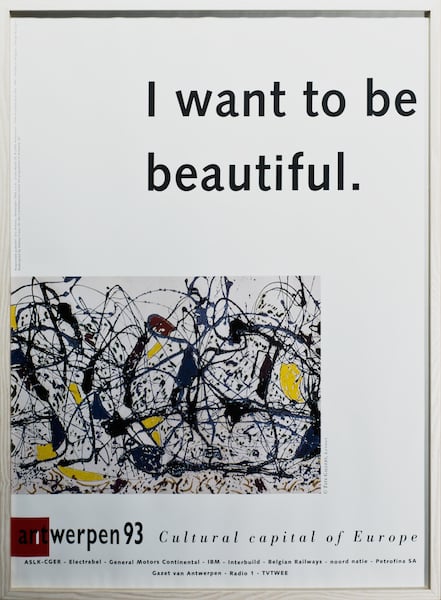
Andrea Fraser On Taking a Normal Situation (1993)
Photo: courtesy of the artist and Galerie Nagel Draxler, Berlin/Cologne.
“The aim was not to place the analysis of wealth concentration in the context of the time we are in but as a reflective critique,” Fraser told artnet News over the phone from Barcelona. “Not only pointing our fingers at the super rich but also reflecting critically on our own participation, the ways in which we benefit from the concentration of wealth, and how that serves at the interests of artists and institutions and other participants in the contemporary art world and contemporary art market.”
The exhibition covers Fraser’s work from 1984 up to 2014, displaying not just the active results but also the extensive research that she puts into the concepts behind these performances.
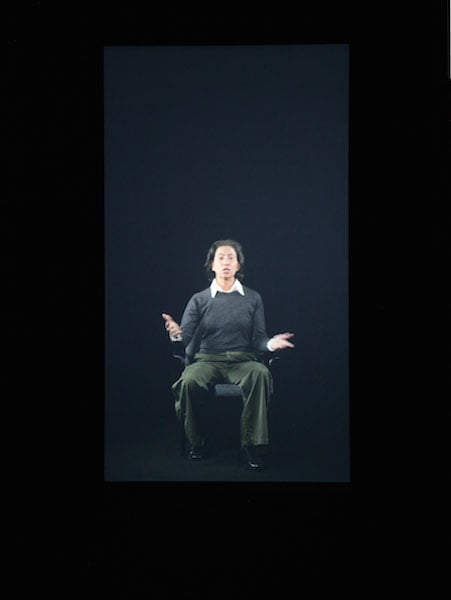
Andrea Fraser, Still from Men on the Line, Men Committed to Feminism, KPFK (2012/2014)
Photo: Courtesy of the artist and Galerie Nagel Draxler, Berlin/Cologne.
“I think a survey of my work has two inherent challenges,” she told artnet News. “There is a huge amount of content and a lot of it is non-visual content, either in the form of spoken word, performances or research material and writing […] I’m really happy with the installation here because there’s a good balance of performance and non-performance work,” she explained.
“We wanted to distinguish in our minds between work that’s experiential and work that activates an intellectual process and critical thinking, research, and so forth,” she added.
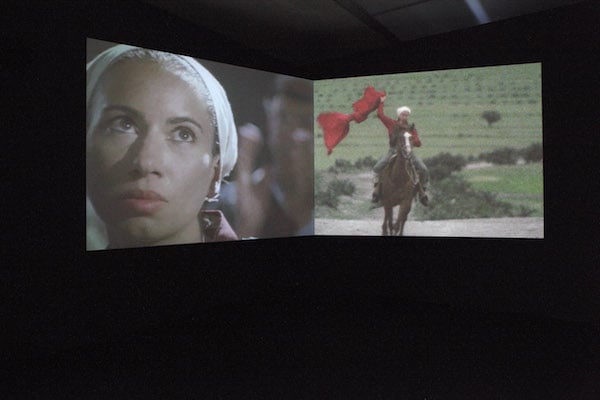
Andrea Fraser, Still from Soldadera (Scenes from Un Banquete en Tetlapayac, a film by Olivier Debroise) (1998/2001)
Photo: Courtesy of the artist.
Visitors will have a chance to see some of Fraser’s most famous performances, such as May I Help You?, in the exhibition which is organized into five sections: The chapter “Globalization” focuses on the art growth of the 90s; “It’s a Beautiful Show isn’t it?” deals with Fraser’s work influenced by sociologist Pierre Bourdieu’s writings on stratification and consumption; “The Personal and Political” explores how the different elements of Fraser’s practice relate back to fundamental principles; and “Collected and Archived” deals with the documentation of and inherent in Fraser’s performance work.
For viewers less familiar with Fraser’s position, but also for those well versed in her unrelenting critical approach, this survey spanning three decades offers a unique opportunity to rediscover and reconsider her performances seen in the context of today’s various inequalities.
“Andrea Fraser, L’1% C’est Moi” in on view at MACBA until September 4, 2016.